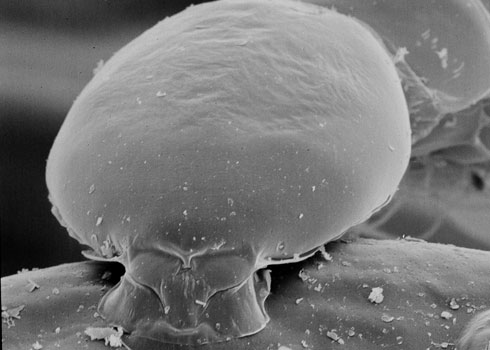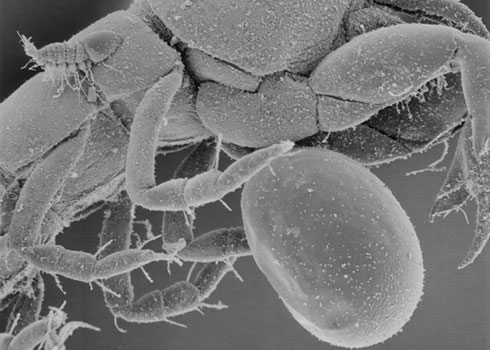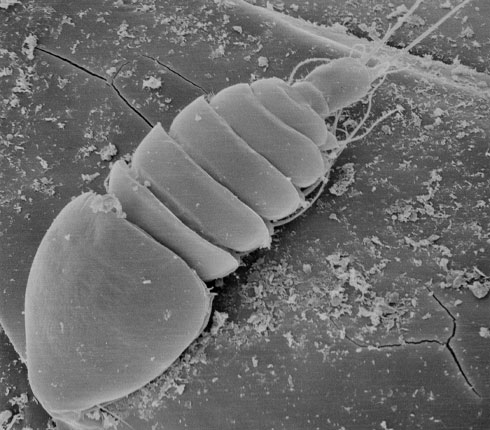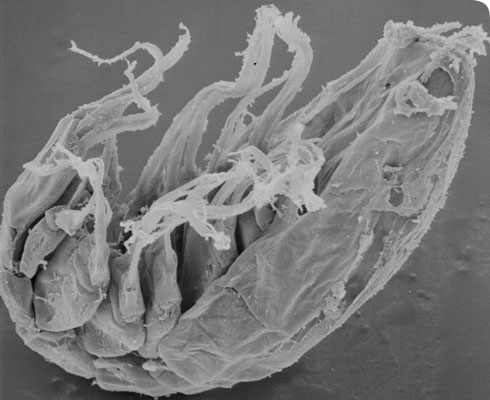Microdajus pectinatus
Microdajus pectinatus is 1 of a handful of British representatives of a distinct subclass of Crustacea called the tantulocaridans that was first recognised by researchers here at the Museum in 1983.
They are tiny - the name means ‘so-small shrimp’, and they live as parasites on other crustacean hosts. Since we discovered them in 1983 they have been found from polar seas to the tropics, and from shallow coastal waters to abyssal depths.
They are a common form of marine life but had been overlooked because they are so small.
Species detail
-

Taxonomy
Microdajus pectinatus is a tantulocaridan, a group which is most closely related to the barnacles. Discover what characteristics they share with their relatives.
-

Distribution
Microdajus pectinatus has only been found in the north-eastern Atlantic, attached to its crustacean host. Find out more.
-

Biology
Most crustaceans have several development stages that are separated by moults. However, like all tantulocaridans, Microdajus pectinatus does not seem to moult. Find out what we know about this organism’s life-cycle.
-

Behaviour and conservation
Microdajus pectinatus remains permanently attached to its crustacean host. So how does it survive when its host moults?
Images

A scanning electron microscope photograph of head end of a tantulus larva of Microdajus pectinatus showing oral disc glued to cuticle of host.
© Natural History Museum, London
A scanning electron microscope photograph of expanded larval stage of Microdajus attached to its host: the posterior sac contains a developing adult male.
© Natural History Museum, London
A scanning electron microscope photograph of a sac-like adult female Microdajus attached to the underside of its host. It is glued to the surface of the host by a disc on the head of the parasite.
© Natural History Museum, London
A scanning electron microscope photograph of the head end of a Typhlotanais host carrying 2 specimens of Microdajus: a tantulus larva attached dorsally on the segment just behind the head, and a sac-like adult female (the large ovoid structure) attached on the underside of the head.
© Natural History Museum, London
The tantulus larva of Microdajus pectinatus attached to the surface of its host.
© Natural History Museum, LondonAbout the author

Prof Geoff Boxshall
Merit Researcher in the Crustacea Research Group, focusing on patterns of diversity in copepods and the biology of parasitic copepods from fish and marine invertebrate hosts.
Toolbox
References
Boxshall, GA, Huys, R and Lincoln, RJ (1989). A new species of Microdajus (Crustacea: Tantulocarida) parasitic on a tanaid in the northeastern Atlantic, with observations on M.langi Greve. Syst. Parasitol. 14:17–30.
